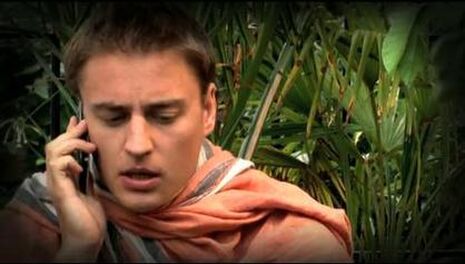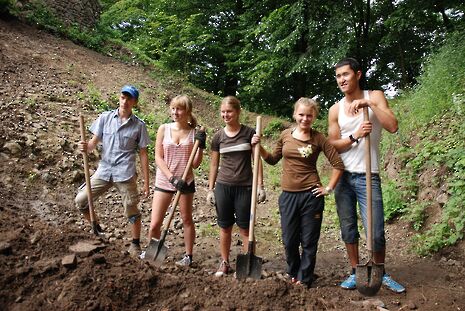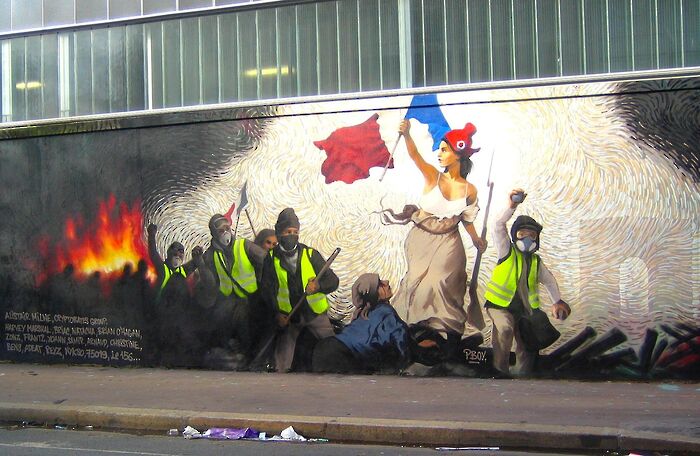‘Gap Yah’ – a cultural critique
Isaac McDonald critiques the notorious ‘Gap Yah’ video and its role in exposing the potentially problematic nature of some gap years

There is an abundance of evidence to suggest that YouTube is one of the most influential cultural platforms in the current global landscape. In 2012 There were 13.% more tourist visitors to South Korea than in 2011, a rise many attribute to the explosion of the music video ‘Gangnam Style’ by South Korean artist Psy. Most of these influences disappear relatively quickly from most people’s social consciousness however. I certainly don’t dance ‘Gangnam Style’ frequently (anymore). It, like bottle flipping, has largely been consigned to irrelevancy.
In each part Orlando’s physical and mental displacement, and limited ability to coexist with each respective country, is figured by him as he ‘chundered everywhah’
This is not true in all cases, however. One video that has stood the test of time, particularly among freshers at Cambridge, is the 3 minute sketch ‘Gap Yah’. Written and performed by Oxford graduate Matt Lacey, it remains an instinctive point of reference in conversations about Gap Years 9 years after its upload in February 2010. Often it takes as little as the phrase ‘Gap Year’ to elicit a braying chorus of half-teasing ‘Gap Yaahs’ from surrounding listeners.
Why has this piece of satire achieved such a long lasting place in the conversations of a particular demographic? Many hilarious things are completely forgotten 9 years after their publication, let alone being the source of an almost daily comment in the life of someone who has taken a gap year. To answer this question we have to look closely at the content of the video.
The video has a three part structure, each part a variation on the same theme. They relate the experiences of ‘Orlando’ in Tanzanah (Tanzania), Perah (Peru) and Burma(h) in turn. The dialectical warping of these names is a precursor to their warped representation by Orlando, already they have been filtered through a certain privileged and ignorant mindset. With Orlando speaking on the phone to friend Tarquin, each part begins with the clumsy transition into a Gap Year story that I’m sure everyone reading this is familiar with: ‘that really reminds me of this time on my gap year’.

Lacey’s tone begins serious; a CV style. He performs an ‘impactful’ and ‘enlightening’ moment: looking into the eyes of a seriously ill woman and feeling they were ‘kindred spirits’; hiking in the Andes and getting a sense of ‘the awesome power and nature and the insignificance of man’, and finally, as the hyperbole reaches its apex, his present state in a Burmese prison. Then in each part Orlando’s physical and mental displacement, and limited ability to coexist with each respective country, is figured by him as he ‘chundered everywhah’, going on to explain that he’d been ‘on the lash’ the night before.
The juxtaposition of these two speech types reveals the conceited performance of the former; these realisations haven’t occasioned any change in the lifestyle of Orlando, they are just conversational and social accolades employed whenever he has someone to listen to him. The fact this was filmed in a garden in England makes this all too perfect, Orlando’s actual presence in these countries is almost entirely irrelevant when the social presence of a Gap Year lies in its relation and performance to others in the attempt to impress. Tarquin becomes a representative of the world Orlando has left behind, and hilariously alternates between a potential employer and a friend with whom he can share the ‘best night of [his] life’.
The entitlement implied by Orlando’s repeated use of ‘my’ to refer to his Gap Year is one of the most uncomfortable parts of the sketch for me
It is the compression and exaggeration of different conversational tropes that exist in the world of a UK university student, but in fragmentary and diluted forms. Obviously Gap Yah is heavily hyperbolised, Orlando is the pure caricature of the White Saviour, and the majority of people who take Gap Years are not nearly as ignorant or ridiculous as Orlando, but it’s the exaggeration of this that allows White Saviour attitudes to be isolated in their more subtle and pernicious form.
What ‘Gap Yah’ can do is promote self-awareness from people who have been on Gap Years, who may conform to parts of the White Saviour Complex so neatly elucidated by Folu Ogunyeye in her article about Voluntourism. It can highlight the unlikelihood of achieving, as Orlando pursues in Burma, ‘Spiritual, cultural, political’ enlightenment, in a year of travelling abroad and going out on the ‘lash’. This is not to say that Gap Years are not worth doing at all, but to say that they have to be approached with humility and gratitude, the entitlement implied by Orlando’s repeated use of ‘my’ to refer to his Gap Year is one of the most uncomfortable parts of the sketch for me. The places visited should also be treated with respect, open-mindedness and caution.
I would say then, that the video is an important cultural artefact. It is satire because it makes you laugh and then think. People perhaps underestimate it because its video on YouTube is not ‘important’ but, as we have established, the influence of a viral video on YouTube is now greater than even the most popular contemporary satirical play. There’s a reason for the continuing relevance of ‘Gap Yah’, and its important we acknowledge this in order to become more self-aware and change for the better.
 Features / How sweet is the en-suite deal?13 January 2026
Features / How sweet is the en-suite deal?13 January 2026 Arts / Fact-checking R.F. Kuang’s Katabasis13 January 2026
Arts / Fact-checking R.F. Kuang’s Katabasis13 January 2026 News / SU sabbs join calls condemning Israeli attack on West Bank university13 January 2026
News / SU sabbs join calls condemning Israeli attack on West Bank university13 January 2026 Comment / Will the town and gown divide ever truly be resolved?12 January 2026
Comment / Will the town and gown divide ever truly be resolved?12 January 2026 News / 20 vet organisations sign letter backing Cam vet course13 January 2026
News / 20 vet organisations sign letter backing Cam vet course13 January 2026










